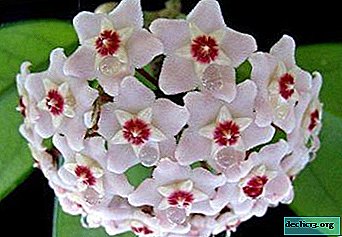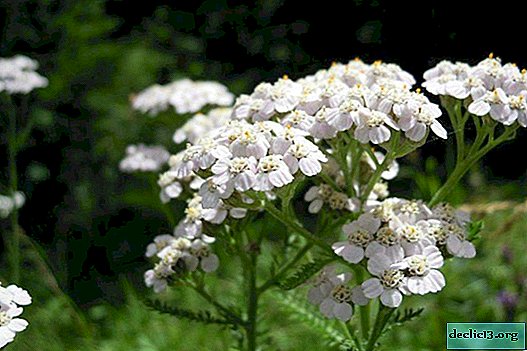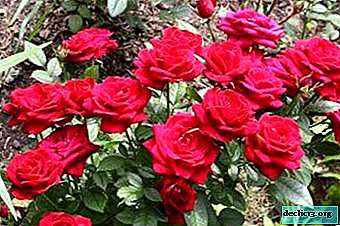Why did sticky drops and white bloom appear on orchid leaves and peduncle? Causes of the disease and methods of treatment
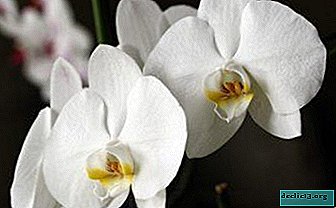 Orchids are more amazing than flowers, but many flower lovers are afraid to plant them due to their capricious nature.
Orchids are more amazing than flowers, but many flower lovers are afraid to plant them due to their capricious nature.
It is believed that plants are often sick and difficult to adapt to at home. But this is a misconception, orchids are more susceptible to diseases due to a gross violation of the rules of care.
From the article you will learn the reasons for the appearance of sticky drops and white plaque, as well as methods for eliminating them.
External signs: white coating, spots, droplets on the peduncle
In indoor conditions, orchids on the leaves meet candied droplets that the plant secrets. The scientific name for this phenomenon is transpiration.. Outwardly, they look like frozen dew drops on green leaves. They are transparent, have a sweetish taste, sticky to the touch. In fact, it is outside the flower nectar that appears on young shoots, bulbs, leaves.
Photo
Photo of the external signs of the disease:



Why did they appear?
The reasons for this unusual phenomenon can be varied.
- Improper care. The combination of excess watering and bright sun, as well as low temperature leads to the appearance of sugar droplets. So a plant, saturated with moisture, quickly gives off excess water through the leaves, as a result, sticky dew appears on the leaves. A large amount of nutrients leads to an excess of sugars that the orchid brings out.
- Insect attraction. In the wild, orchids attract insects for pollination through sweet nectar. This is a natural process for the formation of sticky drops, due to the processing of sugars inside the flower.
- Self defense. The flower produces nectar to protect it from pests. Therefore, it is important to regularly inspect. If the plant is clean, juicy, then everything is in order. But it happens that insects stick in a sweet substance, thereby causing harm to the plant.
- Disease. Sugar drops can be a symptom of powdery mildew (about why sticky drops appear on orchid leaves and what to do about it, read here). Below the leaves, a white coating is noticeable, and in severe stages - black fungal sporulation.
- Harmful insect attack. Sticky leaves are the result of infection of a room orchid with harmful insects, in particular: aphids, scale insects, whiteflies, ticks, and mealybugs. They can be found with no armed gaze, wind up on the underside of the foliage and feed on its juice.
- Grade Features. In some orchids, the presence of a sticky layer is a common thing, in others it never happens, and all this in the absence of pests, and in the same conditions.
Improper care
Perhaps the reason lies in improper care, it is worthwhile to control the temperature and humidity of the air and normalize the irrigation regime. Often an orchid in a similar way signals adverse parameters. Normalizing the conditions, everything will pass in a couple of days.
 Serious reasons for excitement - overfeeding with mineral fertilizers. In addition to sticky drops, spots appear on the leaves. This is quite dangerous, because an excess of fertilizing entails the formation of rot, the death of a peduncle and rosette.
Serious reasons for excitement - overfeeding with mineral fertilizers. In addition to sticky drops, spots appear on the leaves. This is quite dangerous, because an excess of fertilizing entails the formation of rot, the death of a peduncle and rosette.
Also sweet droplets play the role of bait for aphids and other peststhat stick and cannot break out. This entails the development of infectious diseases.
How to determine the cause?
Before proceeding with active actions, it is worth understanding the causes and effects.
Attention! Sticky drops are not always a negative indicator.The main task is the timely recognition of the disease.
- If on the leaves, in addition to the sugar layer, dark spots appear, and the orchid is covered with a white coating, then such symptoms indicate the onset of the development of an infectious disease, powdery mildew. Places of dislocation of the lesion increases markedly every day.
- Sugar drops are also a consequence of the attack of harmful insects. They may be on the back of the leaf, causing the plant discomfort. Eating juice, pests deplete the plant. Subsequently, the flower begins to die slowly.
- If traces of the disease and insects are not found, pay attention to the parameters of the plant. A similar problem is observed if low humidity in the room, the presence of drafts, hypothermia of orchids, overfeeding with fertilizers.
- It happens that a sticky layer appears as a function of protection from harmful insects. They stick to the leaves, a thorough inspection is necessary. If, after the preventive measures have been taken, the state of the plant has not changed, then sugar drops are a natural process, luring insects for pollination or self-defense.
Details about the reasons for the appearance of sticky drops on an orchid and how to help the plant in this case read in our material.
What to do?
Insect damage
Sticky leaves - the result of infection of a room orchid with harmful insects, in particular: aphids, scale insects, whiteflies, ticks, mealybugs. Insects are placed on the back of the leaf and feed on the sap of the plant. The flower begins to dry, the leaves curl, sticky spots appear. If pests are detected with an unarmed gaze, it is important to quickly eliminate them.
Help:
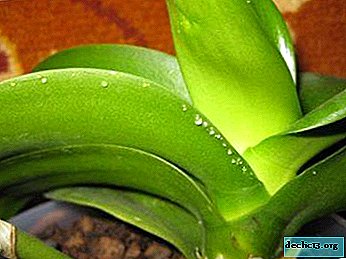 Isolate an infected orchid.
Isolate an infected orchid.- Remove insects with a cotton swab.
- If necessary, trim the affected areas.
- Wash leaves with warm soapy water.
- Treat the plant with a solution of intoxication.
- Reduce watering in the cold season.
- Optimum temperature and humidity.
- You can temporarily hang a masking tape for flies.
Diseases and their treatment
Infectious diseases are troubles that are quickly tolerated. The cause for excitement is the presence of signs of powdery mildew. Harbingers: a sticky layer on the foliage, white coating, it is actively spreading. Over time, the plaque becomes black, the process of decay develops.
Advice! It is not easy to deal with this disease, it is recommended to take emergency measures.If the orchid is sick, then it should:
- Isolate a diseased plant.
- Rinse the orchid with warm water.
- Allow time to dry.
- To process a flower with the preparations "Aktara" and "Aktellik".
- Maintaining optimum humidity and temperature.
- Avoid harsh temperatures and drafts.
- Use boiled or filtered water for irrigation.
Mild methods of treating powdery mildew are folk remedies:
- Spray the affected areas with oil (1 tablespoon of olive oil per 0.5 liter of water).
- You can also mix 15 ml of liquid soap + 10 ml of denatured alcohol + 1,000 ml of warm water. The resulting tool to treat damaged areas.
Plant care
In addition to the above treatment methods, orchids during this period will not be prevented by additional care:
 Regular washing of leaves and pot.
Regular washing of leaves and pot.- To cancel watering, use the soaking of the plant in a container of warm water with a frequency of 2 times in 30 days.
- Once every 2 weeks, a flowerpot with an orchid should be lowered into the water, after adding two Alirina-B tablets there.
- Minimize water treatments in winter.
- In summer, on the contrary, use a warm shower, washing off the dust and the sticky layer.
- Spraying is carried out with an aqueous solution with the addition of 3-4 drops of the Zircon preparation.
- Manual collection of pests during mass settlement.
Prevention
To avoid such unpleasant situations is possible only with proper care of the orchid:
- Maintaining a comfortable temperature in summer: + 22-25ºС, in winter + 16-18ºС.
- Lighting is required diffused, with a daylight duration of 14 hours. In summer, intense sunlight needs to be shaded.
- Humidity within 50-60%. Be sure to regularly ventilate the room.
- Inspect leaves and roots regularly.
- Water once a week with warm, soft water. At intervals, the soil should completely dry.
- Fertilize orchids 2 times a month, especially during the flowering period. Top dressing should be used with a predominant content of potassium and iron.
- It is better to spray the flower up to 5 times a day. Exclude the procedure during the flowering period. Be sure to ensure that the water does not stagnate in the sinuses of the flower.
- Use drugs to increase immunity.
Impeccable courtship of the orchid will lead exclusively to positive consequences. Do not put the plant at risk, take care of it, and in return receive reciprocity. The plant will delight you with unsurpassed, charming beauty of flowers.

 Isolate an infected orchid.
Isolate an infected orchid. Regular washing of leaves and pot.
Regular washing of leaves and pot.
